Want to know what cameras, lenses, telescopes and mounts are used by the best astrophotographers in the world?
I analyzed over 1000 images shortlisted for the Astronomy Photographer of the Year competition in the past eight years to learn what equipment was used.
See below a video and quick summary of the findings or read on for a more detailed analysis.
Summary of Key Findings
- The Sony A7 III is the top camera for landscape astrophotography in 2024
- Other camera models also excel for this and they are ALL Sony, Canon or Nikon, Full-Frame, and Mirrorless models.
- The Sky-Watcher Star Adventurer and iOptron SkyGuider Pro are the most successful star trackers
- ZWO cooled monochrome cameras lead for deep sky imaging, with the ZWO ASI2600MM Pro being top
- ZWO also lead for planetary cameras, with the ZWO ASI174MM at the top
- Takahashi has been the most successful deep sky telescope manufacturer, with the Takahashi FSQ-106EDX4 as the top model
- Sky-Watcher and Celestron lead for planetary imaging telescopes with models like the Celestron C14 and Sky-Watcher Esprit ED120
- Sky-Watcher is the leading mount manufacturer with the Sky-Watcher EQ6-R Pro top. However, iOptron have had much success in recent years with the iOptron CEM70 used frequently.
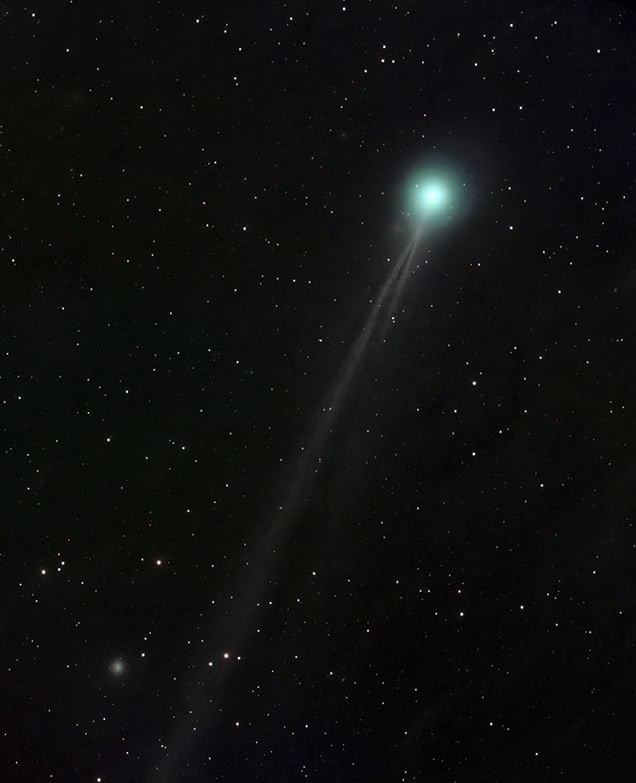
About This Research
This analysis is produced using data generously provided to Skies & Scopes by Royal Museums Greenwich.
You can see details of the Astronomy Photographer of the Year competition and exhibition here.
In total, we have looked at 1141 astrophotography images shortlisted in the competition from 2018 to 2025.
We then categorize each image as one of the below:
- 417 Landscape Astrophotography images (including aurora)
- 421 Deep Sky images (galaxies, nebulae, etc)
- 303 Planetary images (including solar and lunar)
Breaking up the images into these categories is necessary as different equipment is typically used for different types of astrophotography imaging.
If you want to learn more about how we did this analysis, please see our methodology here.
Now let’s look at the results and admire some of the amazing images.
Landscape Astrophotography
Landscape astrophotography is the art of composing an image that incorporates both elements of the night sky and terrestrial features of the Earth.
It requires different equipment to deep sky and planetary imaging, which tend to use telescopes and specialist astronomy cameras, whereas landscape astrophootgraphy is usually done with “regular” cameras and lenses.
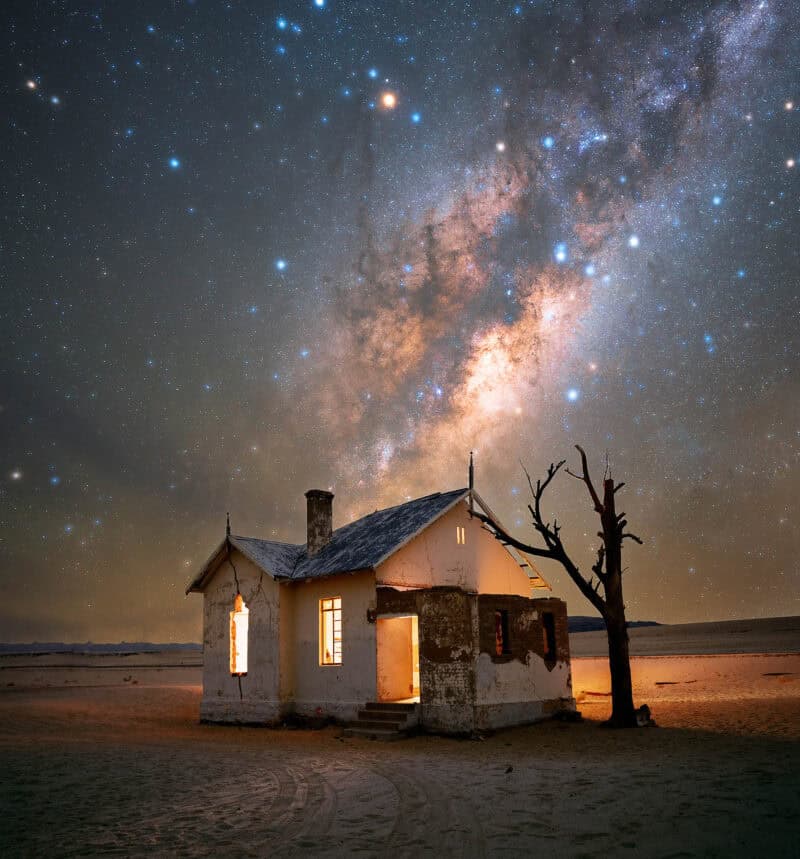
Cameras
The most commonly used camera models in the 2024 competition for landscape astrophotography are:
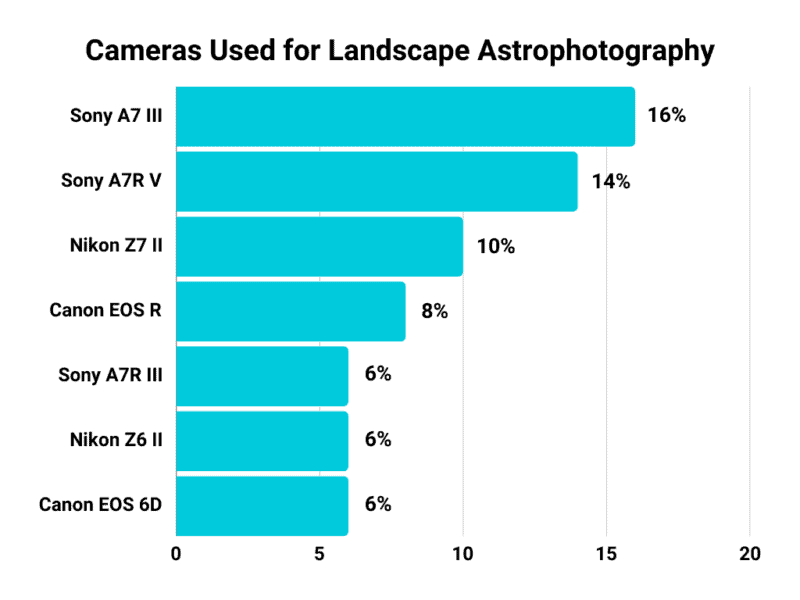
Nearly all (98%) cameras in this category are Sony, Nikon or Canon models.
Just a handful (2%) have used Hasselblad, Olympus, Fujifilm, Panasonic and Pentax cameras in the whole period of 2018-2024.
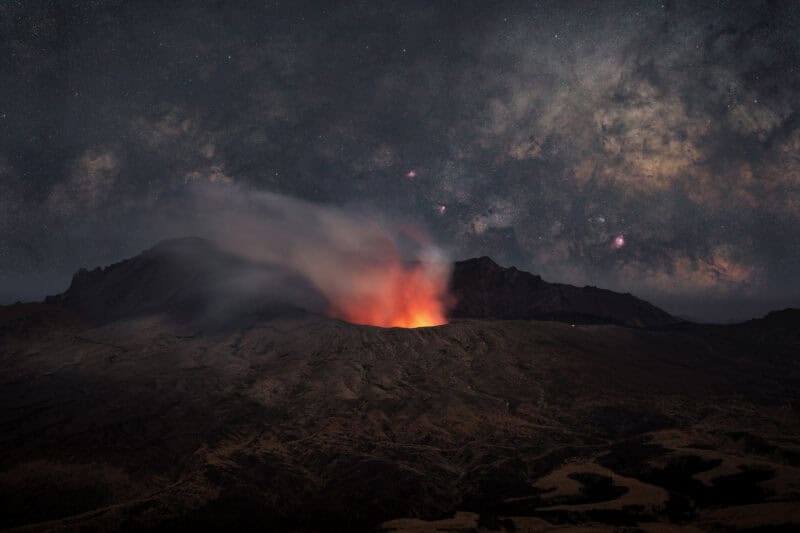
Sony vs Nikon vs Canon
The leading brand has varied between Canon, Nikon and Sony over the years.
Canon used to dominate but now Sony cameras are the most used:
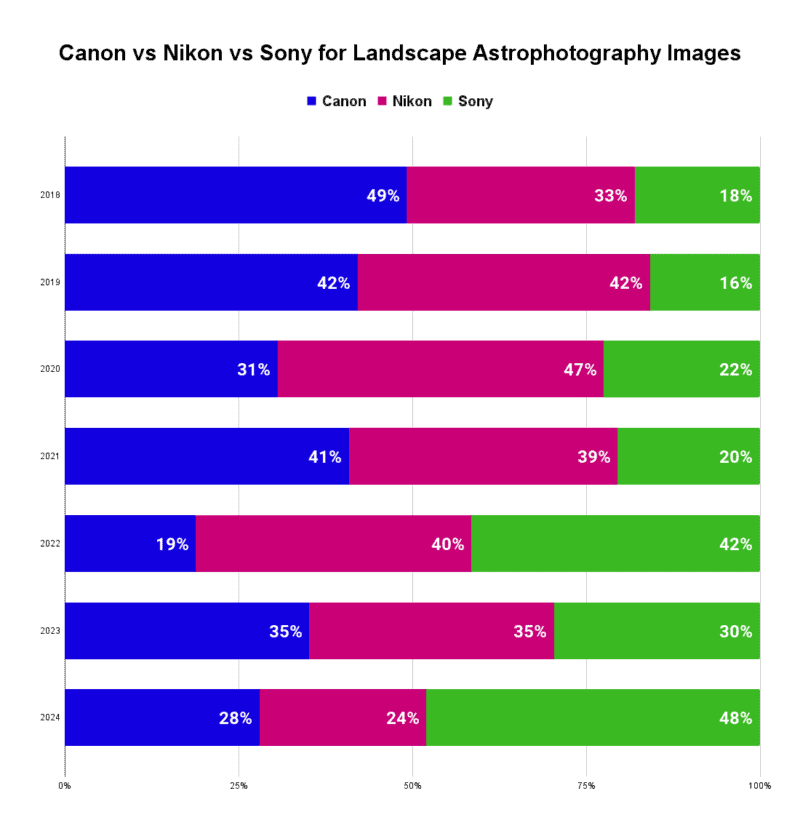
DSLR vs Mirrorless
DSLR use is fully dying out now. This reflects the wider trend in photography as Mirrorless cameras have got better and more affordable:
- In 2024, 88% used Mirrorless cameras versus 12% DSLR
- In 2018, it was almost the other way around
Looking at this data, you can see 2022 was the year that Mirrorless cameras took over from DSLRs, and this also coincides with Sony becoming the most used camera brand:
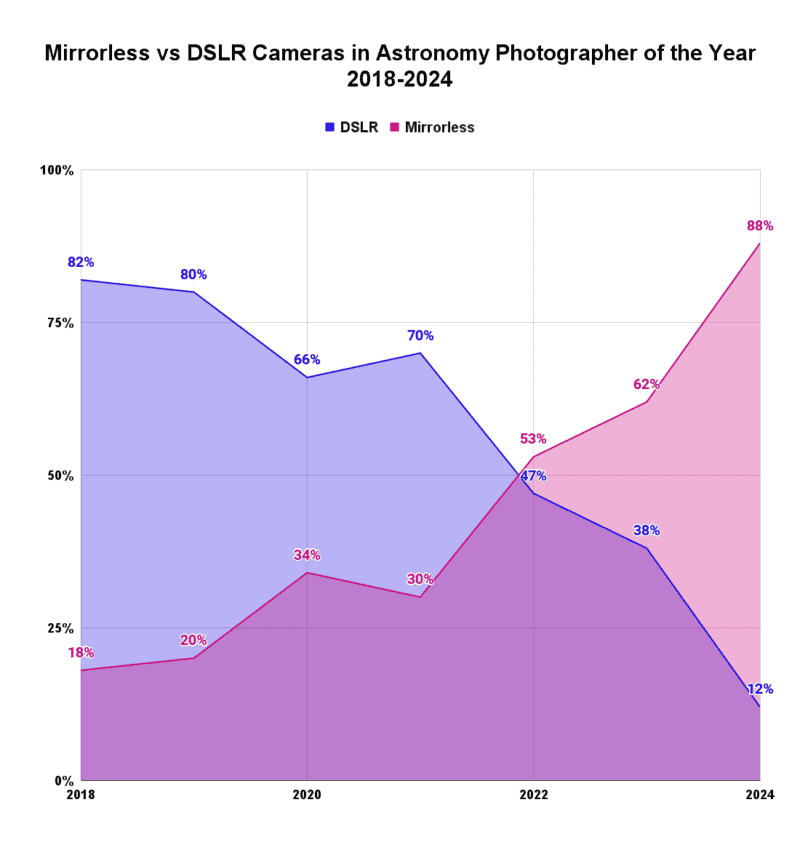
Sensor Size: Full-Frame vs APS-C
100% of shortlisted landscape astrophotography images in 2024 used full-frame sensor cameras.
This is because they:
- Perform better in low-light conditions
- Allow a wider expanse of the night sky to be photographed (no cropping)
It seems if you want to be serious about landscape astrophotography then a full frame sensor camera has become the norm.
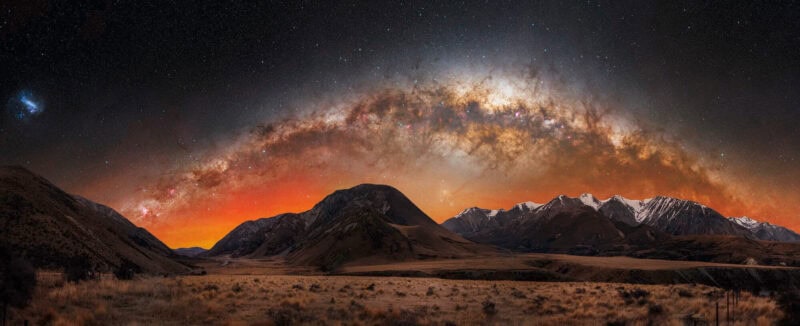
Astro-Modification
One thing to note is that many advanced landscape astrophotographers use astro-modified versions of these cameras.
Astro modified cameras are regular DSLR or mirrorless cameras where part of the infrared filter has been removed to allow it to process color from astronomical objects better. You can read more about this here.
Whether the cameras are astro-modified or not is rarely recorded in the Astronomy Photographer of the Year competition data.
However, we also looked at the data from the Milky Way Photographer of the Year competition, and more than three-quarters of photographers used astro-modified models.
Therefore it seems a reasonable conclusion that a sizeable proportion did so in this competition.
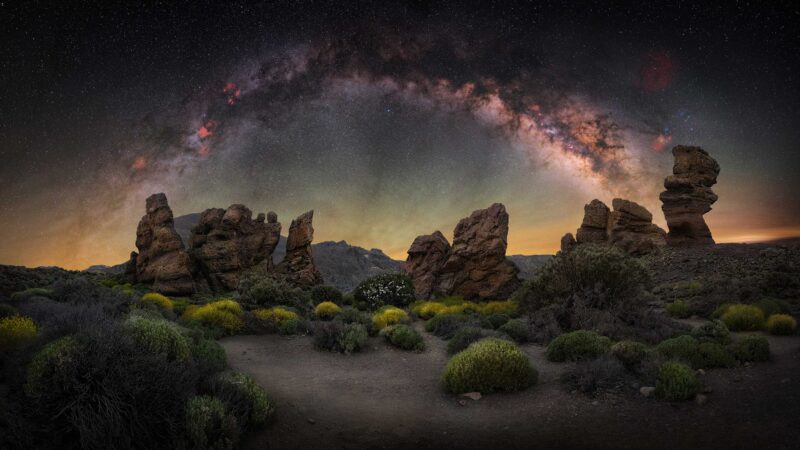
Bringing it all together
Using all this, you can narrow down the characteristics of the right camera for landscape astrophotography as:
- Sony, Canon or Nikon
- Full-frame sensor
- Probably mirrorless
- Possibly astro-modified
Therefore, if you were looking to get a camera then all those cameras performing highest in this competition fit the bill:
- Sony A7 III / Astro-Modified
- Sony A7R V
- Nikon Z7 II
- Canon EOS R
- Nikon Z6 II / Astro-Modified
- Sony A7R III
- Canon EOS 6D
Many astrophotographers that we’ve featured in case studies this year have demonstrated great success with the Sony A7 III in particular – see here.
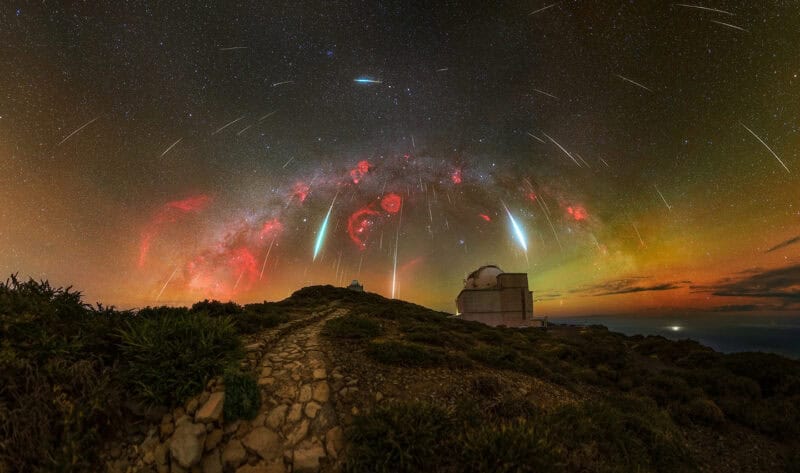
Lenses
There is less data on the specific lenses used in the competition data, but we can draw some conclusions.
Most images in this category use:
- Wide focal length – for example, 11mm to 24mm (the lower the wider)
- Fast aperture – f/1.4 to f/2.8 (the lower the faster)
This is because:
- A wide focal length allows you to capture a wider expanse of the night sky.
- A fast aperture means that it is better at gathering light and this is especially important for night sky astrophotography as it inherently takes place in low light.
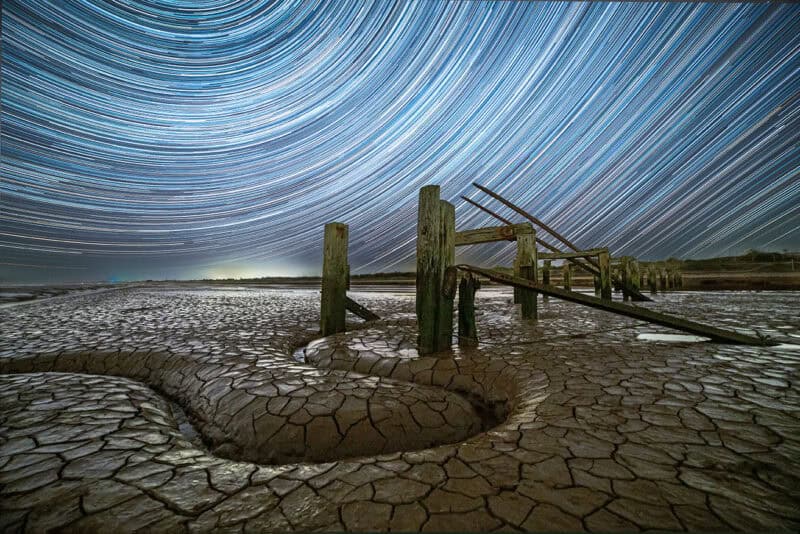
Popular lens models for landscape astrophotography include:
- Sony 14mm f/1.8 GM
- Sony 24mm f1.4 GM
- Sigma 14mm f/1.8 Art
- Sigma 24mm f/1.4 Art
- Nikkor Z 14-24mm f/2.8
- Rokinon /Samyang 14mm f/2.8
Remember:
- A lower f-number means the faster the aperture and the better it will perform in low-light
- The lower the focal length the wider it is and the larger the expanse of sky you will be able to capture
What you choose will also depend on whether you are using a Sony, Nikon or Canon camera.
Star Trackers
Star Trackers are devices used by many landscape astrophotographers to track the movement of the stars in the night sky and allow longer exposure times.
The most commonly used models in the competition are in this order:
- Sky-Watcher Star Adventurer
- iOptron SkyGuider Pro
- iOptron SkyTracker Pro
- Fornax LighTrack II
- Move Shoot Move
- Vixen Polarie
You can see how this breaks down here:
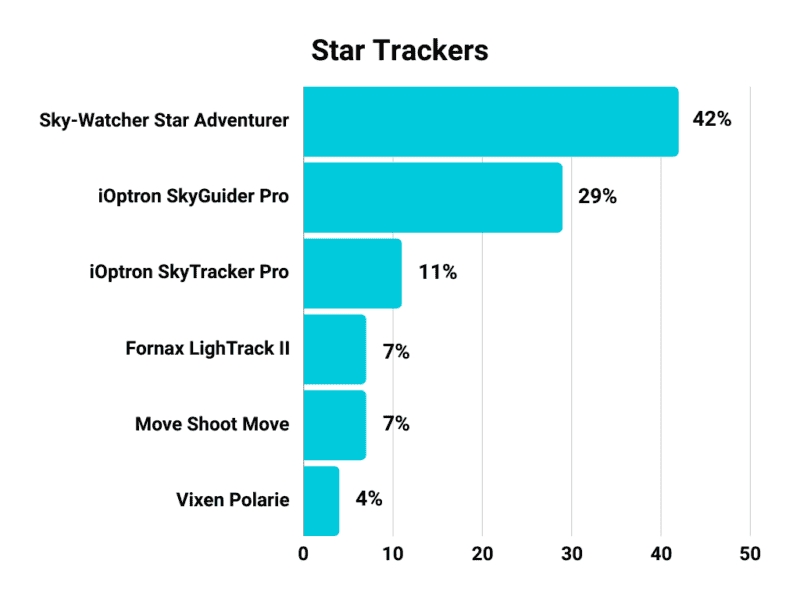
If you narrow this data down to just the last three years then you can see that in recent year most people are using one of these two models:
- Sky-Watcher Star Adventurer – 42%
- iOptron SkyGuider Pro – 42%
Three others (Fornax LighTrack II, iOptron SkyTracker Pro and Move Shoot Move) account for the remaining 16%.
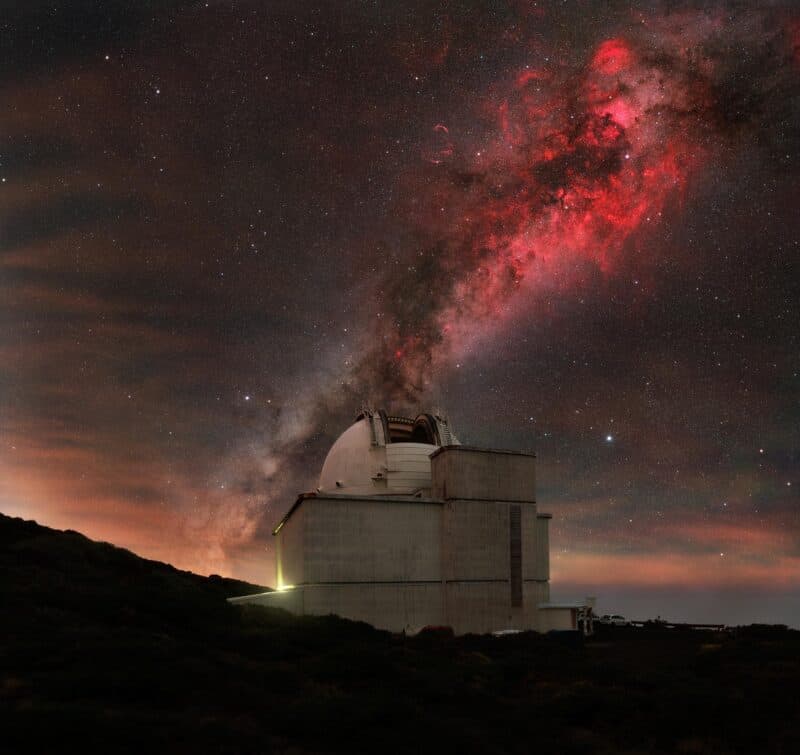
Deep Sky & Planetary Astrophotography
Now we turn our attention to deep sky and planetary astrophotography and the cameras, telescopes and mounts that have been used to capture amazing images like this:
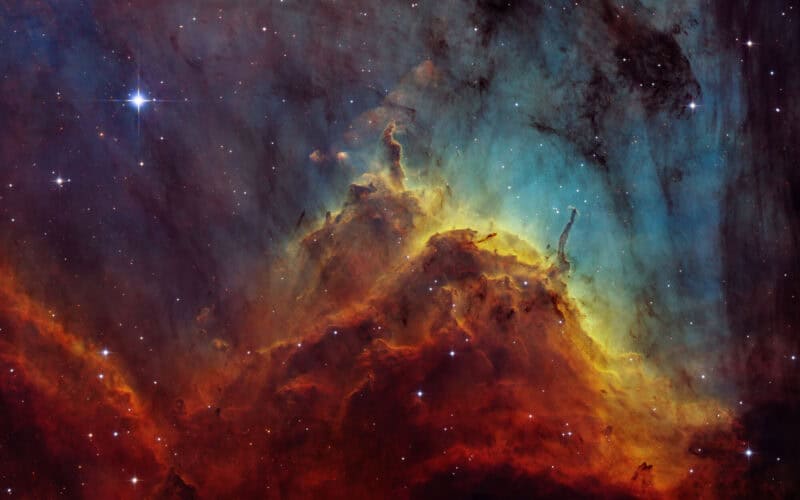
Deep Sky Cameras
There are a handful of manufacturers that dominate for dedicated astronomy cameras.
In the past three years, more than half of shortlisted deep sky images were taken with ZWO cameras, with the majority of the rest from Finger Lakes Instrumentation (FLI), QHYCCD and Diffraction Limited (SBIG).
You can see the breakdown here (2018-2024):
- ZWO – 53%
- Finger Lakes Instrumentation – 17%
- QHYCCD – 15%
- Diffraction Limited – 3%
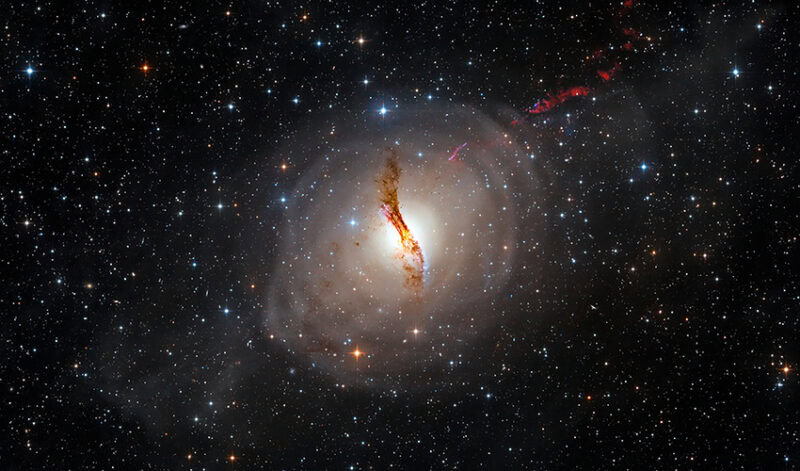
The top camera models for deep sky imaging in recent years have been:
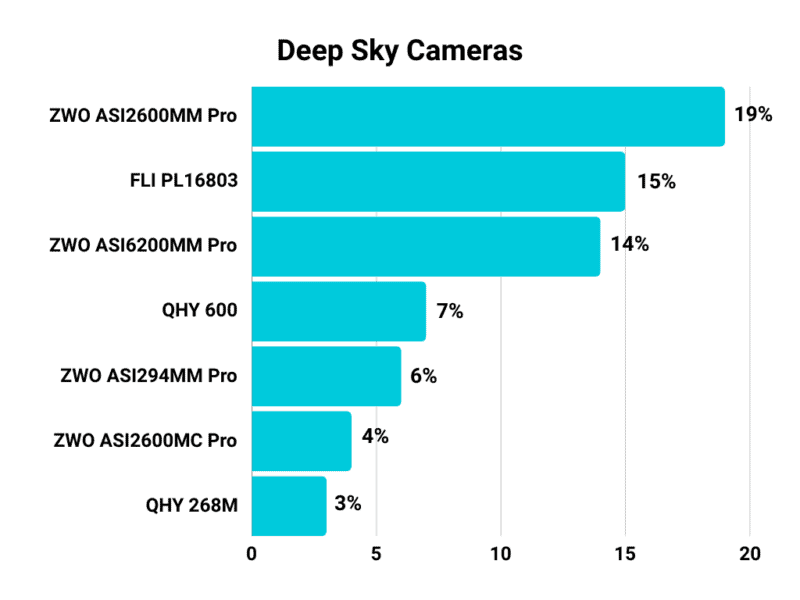
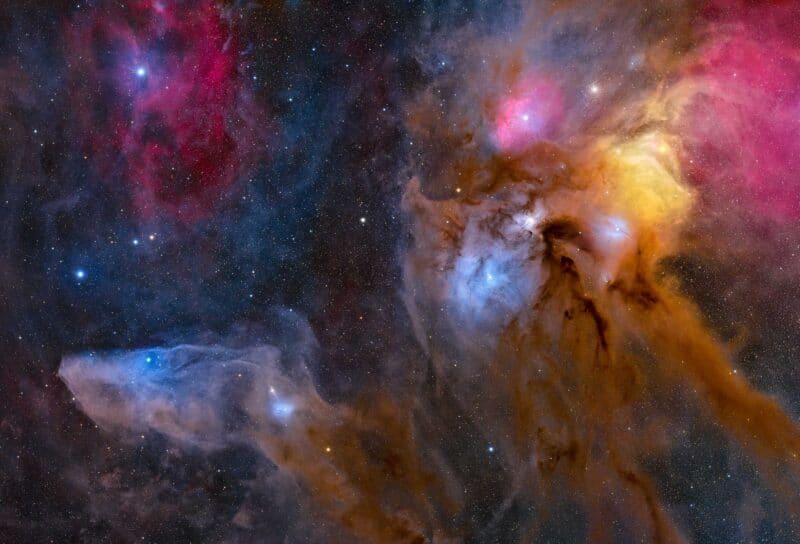
Planetary Cameras
Planetary imaging incorporates photographing the planets of our solar system, but also the sun, moon and other objects like comets.
We’ve tried to break this down here in the way that makes the most sense.
Once again, ZWO are the most successful manufacturer, but Player One Astronomy cameras have become popular in recent years.
Here’s the breakdown for 2022-2024:
- ZWO – 46%
- Player One Astronomy – 17%
- QHYCCD – 11%
- Canon – 8%
- Nikon – 6%
- Sony – 4%
As you can see, “regular” cameras from Canon, Nikon and Sony are also successfully used for planetary imaging.
The most successful planetary cameras overall in the past two years have been:
- ZWO ASI174MM – 8%
- Player-One Uranus-C – 6%
- ZWO ASI178MM (now discontinued) – 6%
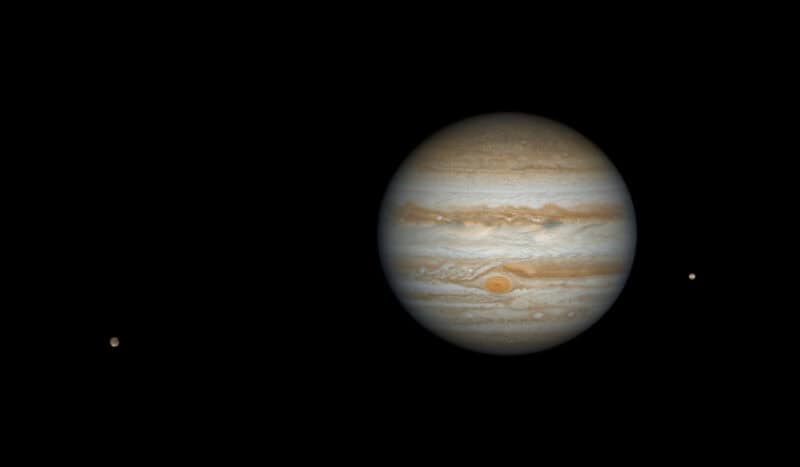
Solar Cameras
If we break this down for solar images in the last two years, then the most successful cameras have been:
- Player One Apollo-M Max – 16%
- QHY 5III174M – 13%
- Canon EOS R5 – 9%
- ZWO ASI174MM – 9%
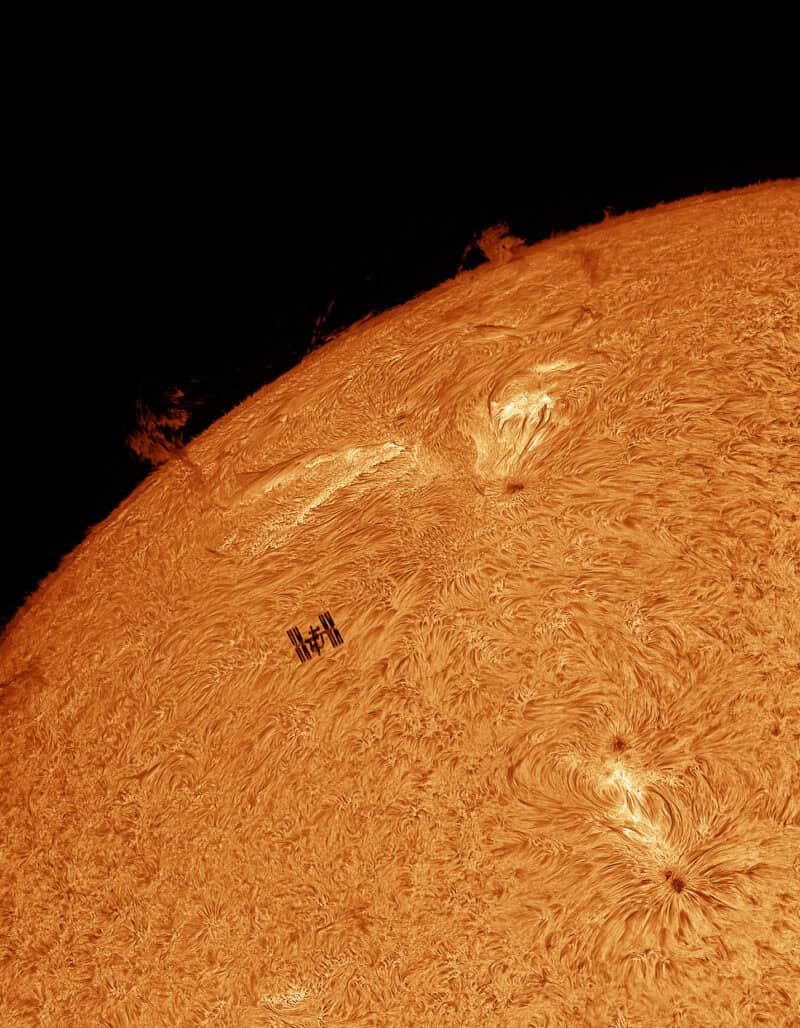
Lunar Cameras
If we look at just cameras used for moon photography, then these have been the top models in the last two years:
- ZWO ASI178MM (now discontinued) – 15%
- ZWO ASI183MM – 9%
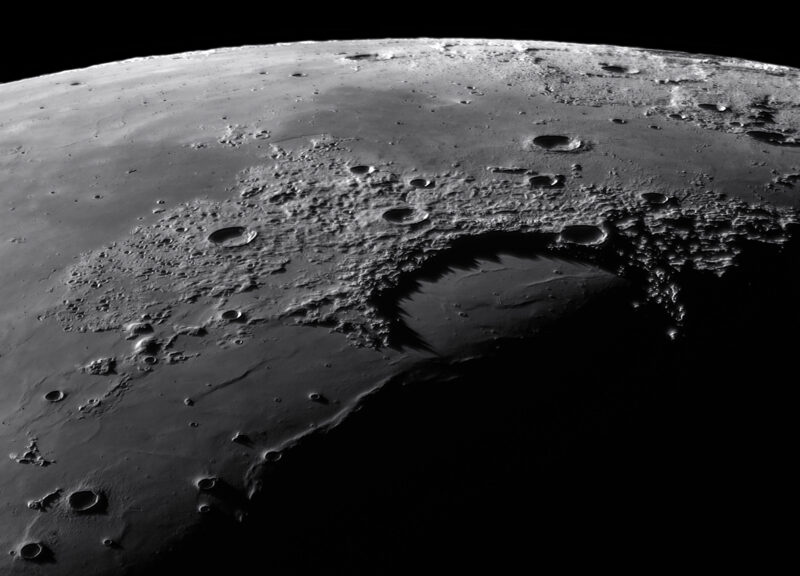
Telescopes
Similar to cameras, different telescopes tend to be more suited to deep sky imaging than to planetary imaging, and vice versa.
For all shortlisted images in the whole seven years, the most successful telescope manufacturers have been:
- Celestron – 16%
- Sky-Watcher – 16%
- Takahashi – 16%
- Planewave – 12%
- ASA – 8%
- William Optics – 4%
We break this down more below, with Celestron telescopes excelling for planetary, and Sky-Watcher and Takahashi for deep sky.
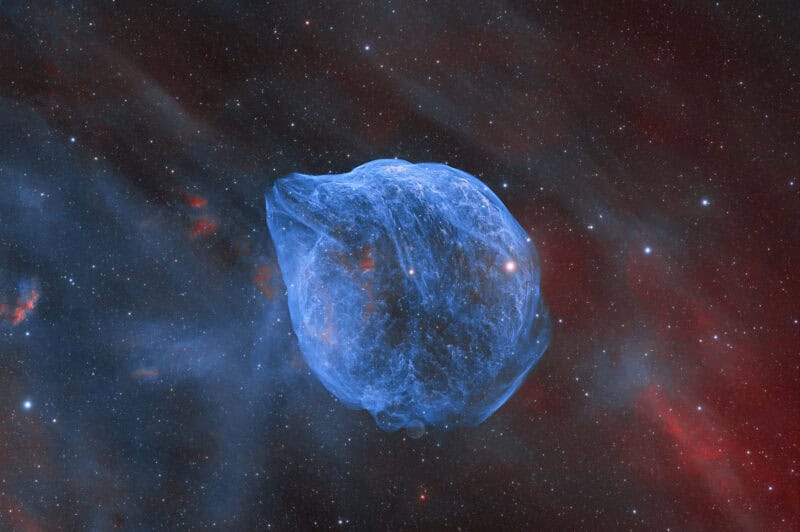
Deep Sky Telescopes
Apochromatic Refractors are the most commonly used telescope type for deep sky images shortlisted in the competition in the whole seven years:
- Apochromatic Refractor – 47%
- Newtonian Reflector – 25%
- Corrected Dall-Kirkham – 15%
- Ritchey-Chrétien – 10%
- Schmidt-Cassegrain – 3%
Corrected Dall-Kirkham (CDK) and Ritchey-Chrétien telescopes are usually the very advanced models from Planewave and ASA that are used in observatories and remote telescopes.
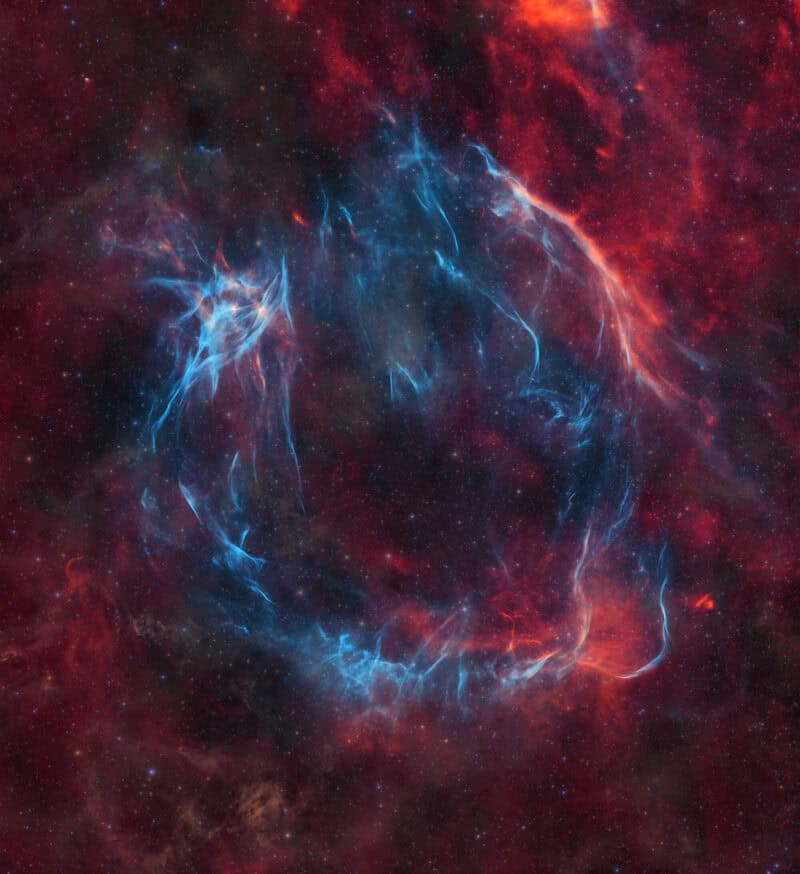
The most successful deep sky telescope brands in the last two years have been:
- Takahashi – 26%
- Sky-Watcher – 17%
- Planewave – 15%
- Astro Systeme Austria (ASA) – 10%
- William Optics – 8%
Takahashi offer advanced models that are within reach of amateur imagers, Sky-Watcher offer a range for amateurs, and William Optics sell the best budget offereing.
The most successful deep sky telescope models in the last two years have been:
- Takahashi FSQ-106EDX4 – 10%
- Takahashi TOA-130NS – 6%
- William Optics RedCat 51 – 5%
- Planewave CDK 24 – 5%
- ASA 500mm Newtonian – 5%
- Sky-Watcher Esprit 100ED – 4%
- Takahashi Epsilon-180ED – 4%
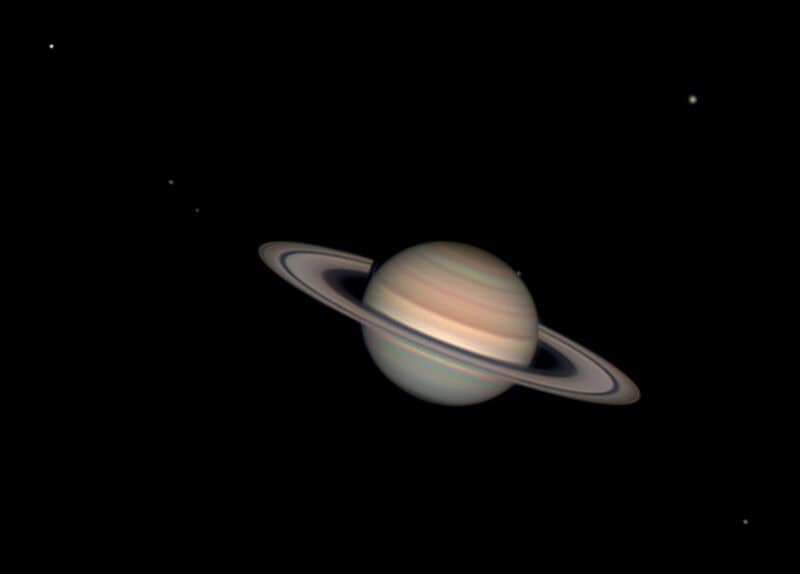
Planetary Telescopes
There are two brands dominating for planetary telescopes:
- Sky-Watcher – 35%
- Celestron – 22%
With these telescope types being most commonly used:
- Apochromatic Refractor – 45%
- Newtonian Reflector – 34%
- Schmidt Cassegrain – 16%
The top models are:
- Sky-Watcher 400P (16″) Dobsonian Reflector – 10%
- Celestron C14 – 5%
- Celestron C14 EdgeHD – 5%
- Sky-Watcher Esprit ED120 – 5%
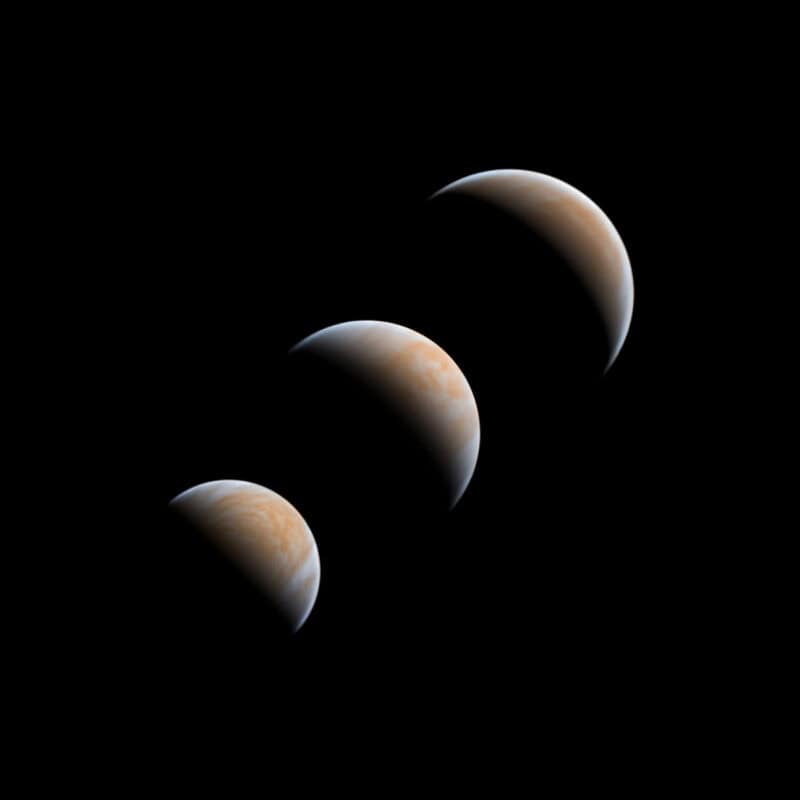
Solar Telescopes
Solar images are overwhelming done with Apochromatic Refractor telescopes (98%), with Sky-Watcher (48%) and Astro-Physics (13%) being the most used brands.
The top models in the last three years have been:
- Sky-Watcher Esprit ED120 – 17%
- Sky Watcher Evostar 150ED – 13%
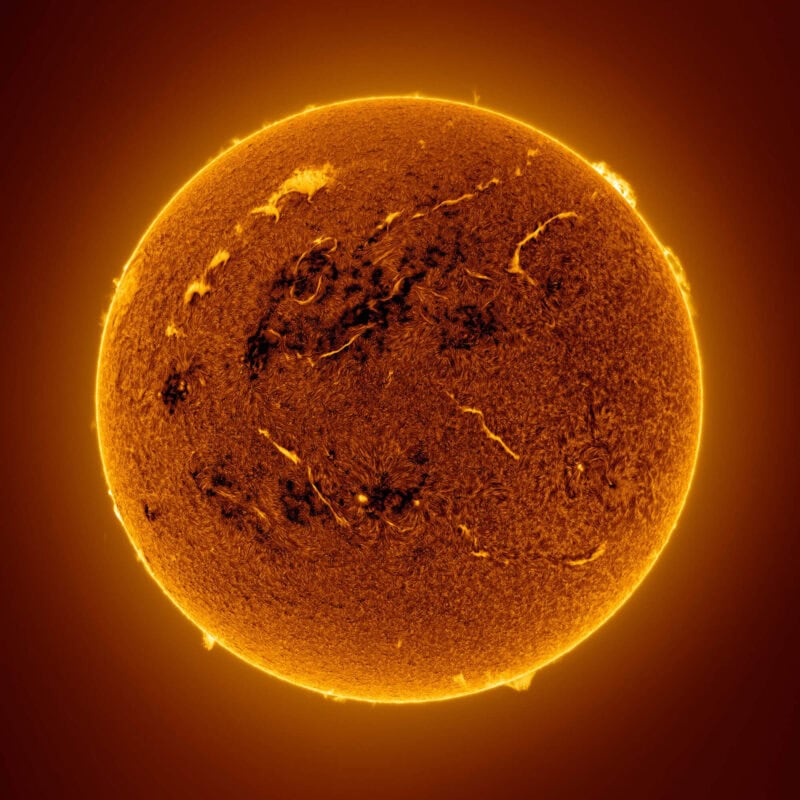
Lunar Telescopes
The manufacturers dominating lunar imaging are, again, Celestron (39%) and Sky-Watcher (30%).
The most common types used are (in the past three year):
- Newtonian Reflector – 44%
- Schmidt-Cassegrain – 24%
- Apochromatic Refractor – 20%
The most successful models have been:
- Celestron C11 – 12%
- Sky-Watcher 200/1000 Newtonian – 8%
- Sky-Watcher 400P (16″) Dobsonian Reflector – 8%
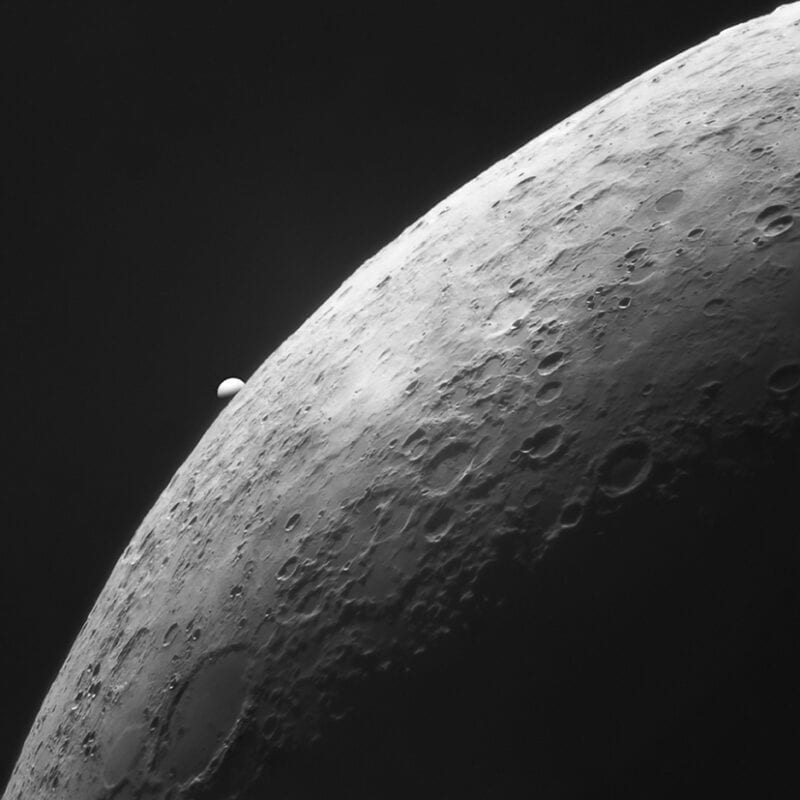
Mounts
The top mount manufacturers in the past two years have been:
- Sky-Watcher – 41%
- iOptron – 12%
- Planewave – 9%
- Software Bisque – 6%
- Astro Systeme Austria – 5%
- Astro-Physics – 5%
- Celestron – 5%
- ZWO – 5%
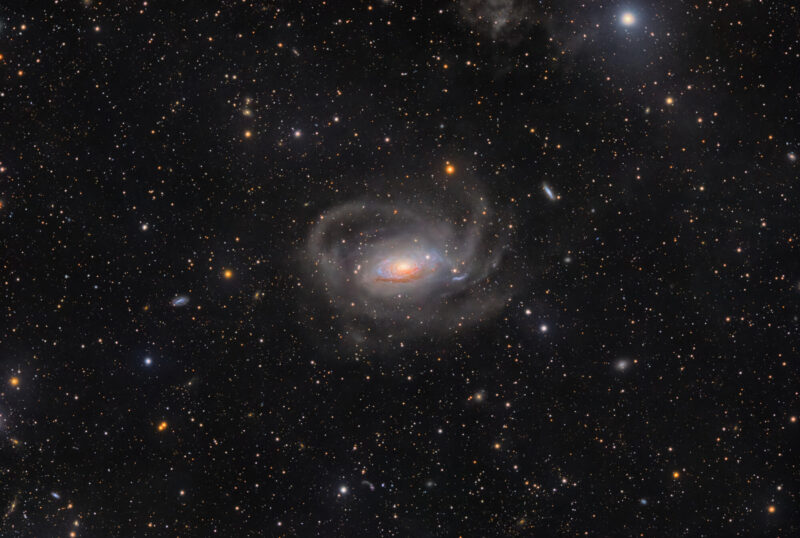
The most commonly used mount types are:
- German Equatorial – 63%
- Direct Drive – 15%
- Center-Balanced Equatorial – 11%
- Harmonic – 8%
- Dobsonian – 3%
Note, whilst German Equatorial mounts are still top, Harmonic, Direct Drive and iOptron Center-Balanced Equatorial have caught up a lot in more recent years.
The top models in the past two years have been:
- Sky-Watcher EQ6-R Pro – 19%
- iOptron CEM70 – 9%
- Sky-Watcher EQ8-R Pro – 6%
- ZWO AM5 – 5%
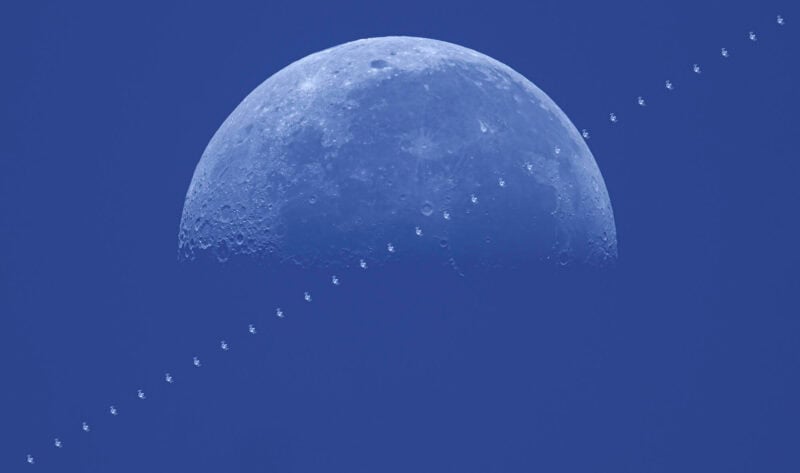
More Information – Astronomy Photographer of the Year
Thanks to Royal Museums Greenwich in London, UK who host this competition every year and provided us with the data to examine.
You can visit the exhibition and buy the book with all the shortlisted images on the museum’s website.
If you want to learn more about how we did this analysis, please see our methodology here.
The featured image at the top of this article is A Very Deep Look at the Markarian’s Chain © Jakob Sahner. Taken with a Sky-Watcher Esprit 100 telescope, iOptron CEM70 mount and QHY 268m camera.
Related Content
- Best Astrophotographers Interviews & Case Studies
- Best Cameras for Astrophotography
- Best CCD and CMOS Cameras for Astrophotography
- Best ZWO Cameras
- Best Lenses for Astrophotography
- Best Star Trackers for Astrophotography
- Best Telescopes for Astrophotography
- Best Mounts for Aastrophotography
- Milky Way Photographer of the Year Gear Analysis



Hay una cámara específica para astro fotografía muy buena , pero no es tomada en cuenta
Que es la D810A
What a wonderful review. however the results of having all this equipment fade quickly when we cannot see the results of using it. When can we see the photographs !
Regards John.
Thanks John! You can see all the shortlisted images here: https://www.rmg.co.uk/whats-on/astronomy-photographer-year
Dear Mr. Robinson,
thank you very much for this information.
Might there be a mistake in the numbers in the diagram for:
#Mirrorless_Camera_Use_Increases_Every_Yearn
as for the year 2022: 52 and 42 will only add up to 94%
whereas for the year 2022: 58 and 48 are 106%.
If you turn around the numbers for DSLRs for both years, that would probably solve the problem.
With kind regards,
Dr. Schuhmacher
Dear Dr. Schuhmacher,
Thank you so much for highlighting this. This has been fixed now.
All the best
Anthony
Great review. Thanks for all the time and effort this must have taken. Well done.
You’re welcome Alan and thank you for the kind comment.
nice post
Thanks!